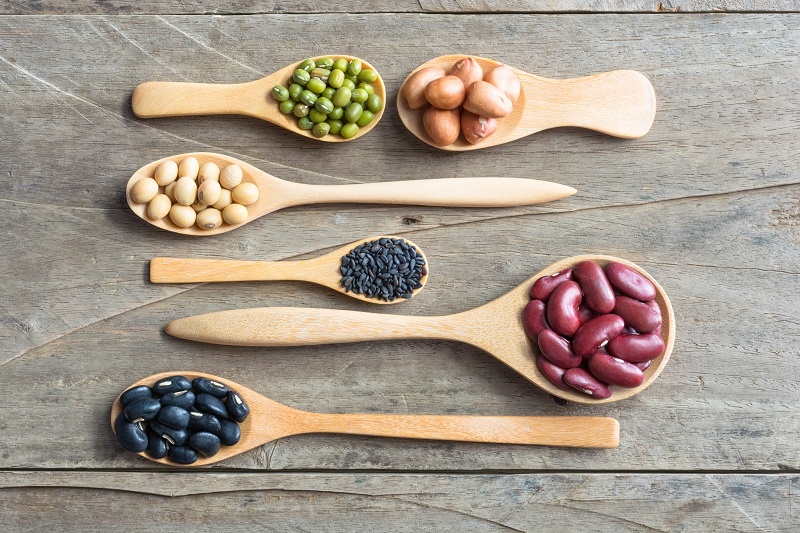Not so long ago, you would not have been able to find items such as tofu, veggie burgers or plant-based milks on supermarket shelves. With a move toward plant-based eating, these products are now widely available. Why the shift? A growing body of research supporting the replacement of animal proteins with plant-based options for health has fueled this change. Plant-based diets have been linked to lower risks of heart disease, high blood pressure, type 2 diabetes, and certain cancers.1 In addition, food sustainability benefits have also been well documented.2
With the growing interest in plant proteins comes confusion and questions about the nutritional value. Proteins are made up of building blocks known as amino acids. Some of these our bodies can make and others (known as essential amino acids) we need to get from our diet. All plant foods contain some amino acids but may be lacking in others, making them “incomplete proteins”.
It was traditionally taught that plant proteins needed to be combined with other foods that contained the missing amino acids to “complete” the protein (i.e. rice eaten with beans). But, in a Western diet that is generally varied and plentiful, thinking has changed. The Academy of Nutrition and Dietetics has issued a position statement on vegetarian diets stating that in a well-balanced varied diet, there is no need to specifically combine foods as long as over the course of a few days, foods with different amino-acid profiles are consumed.1 Thus, a well-planned diet based on plant proteins can adequately meet nutritional needs. Vegans must be a bit more careful as the diet may be more limited and rely solely on plant-based foods.
Get more plant-based proteins into your diet by
- Substituting whole food soy (tofu, tempeh) for animal proteins
- Adding beans or lentils to stir-frys, soups and casseroles in place of meats or poultry
- Including nuts, nut butter or seeds like chia or flax, each day
- Switching to plant-based milks like almond milk, coconut milk or hemp milk
- Cooking and baking with higher protein plant-based flours like almond and pea flour
- Choosing higher-protein grains, such as quinoa
Plant-based meal ideas to get you through the day:
Breakfast:
- Try steel cut oatmeal with berries and nuts.
- Top 1-2 slices of 100% whole wheat or sprouted bread with mashed avocado (add chia or flax to the mash).
Lunch:
- Enjoy a salad of your favorite greens and vegetables topped with beans and sunflower seeds. Drizzle tahini dressing on top.
- Make a wrap using a whole wheat wrap and filling with hummus and vegetables (try lettuce, tomato, peppers, and radishes for texture and crunch).
Dinner:
- Stuff a portobello mushroom with chopped spinach and white beans.
- Try a delicious butter bean burger as a beef burger substitute.
- Toss spaghetti with a nut pesto sauce.
- Bean based soups and chili are hearty and full of fiber.
Incorporating some of these options into your diet will make it easy to power up your protein intake with plant based foods. Enjoy!
In good health,
Caroline
1. Melina V, Craig W, Levin S. Position of the Academy of Nutrition and Dietetics: vegetarian diets. J Acad Nut Diet 2016; 116(12): 1970-1980. Tilman D, Clark M. 2. Global diets link environmental sustainability and human health. Nature. 2014;515(7528):518-522.
